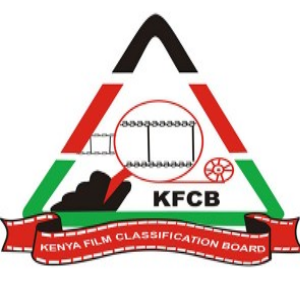Kenya Film Classification Board
 |
|
| State-owned enterprise | |
| Industry | Motion picture rating system |
| Founded | October 1, 1963 |
| Headquarters | Nairobi, Nairobi County, Kenya |
|
Area served
|
Kenya |
|
Key people
|
Ezekiel Mutua (CEO) |
| Website | www.kfcb.co.ke |
The Kenya Film Classification Board (abbreviated as KFCB) is a state corporation that operates under the Government of Kenya whose mandate is to "regulate the creation, broadcasting, possession, distribution and exhibition of films by rating them." The Board was founded in 1963 with the commencement of the laws outlined in the Films and Stage Plays Act of 1962 (Section 11) and has since involved itself in the rating and classification of films and television programmes. More recently, it has caused controversy by banning several films, such as the American box office success The Wolf of Wall Street, the Kenyan film Stories of Our Lives and the 2015 film Fifty Shades of Grey based on the novel of the same name. The Board has also regulated television content, including advertisements.
The Kenya Film Classification Board was established by the Films and Stage Plays act of 1962 which came into force in 1963, mainly to regulate the creation, broadcasting, possession, distribution and exhibition of films by examining them for content, imposing age restrictions and giving consumer advice about various films. The Act gives the Board the power to approve or refuse to approve films and posters. The Act also states that approval is not to be granted to films that, in the Board's opinion, "prejudice the maintenance of public order or offend decency, or... [are] undesirable in the public interest. In addition, the Kenya Information and Communications Amendment Act of 2013 gives the Board the mandate to monitor television stations in order to "ensure content meant for adult audiences is not aired during watershed period (5am – 10pm)."
The Board primarily classifies and rates films by examining them and giving them a 'certificate of approval' along with its rating of 0 to 4. This scale indicates the 'impact' of the film: "low", "mild", "moderate" or "strong". This then corresponds to the general rating of the film: GE (general exhibition), PG (parental guidance recommended), 16 (not suitable for persons under the age of 16) and 18 (not suitable for persons under the age of 18). After the certificate of approval is issued, the classification officer records the name of the film, its country of origin, rating and the date of rating and publishes the information in the KFCB classification catalogue. The Board's other activities include licensing film distributors in the country by granting film regulatory licenses to the distributors, and checking for violation of the terms of the license, including "license expiry, sale of unrated movies, sale/showing of restricted movies and misuse of classification labels."
...
Wikipedia
